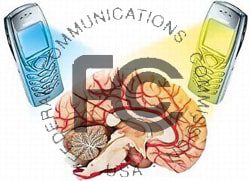
The FCC plans on taking another look at cell phone radiation over concerns the ubiquitous devices may be linked to brain tumors. The chairman of the Federal Communications Commission (FCC), Julius Genachowski, requested the review, releasing a proposal to his peer commissioners calling for a formal inquiry into cell phone emission standards implemented in 1996, […]
 The FCC plans on taking another look at cell phone radiation over concerns the ubiquitous devices may be linked to brain tumors.
The FCC plans on taking another look at cell phone radiation over concerns the ubiquitous devices may be linked to brain tumors.
The chairman of the Federal Communications Commission (FCC), Julius Genachowski, requested the review, releasing a proposal to his peer commissioners calling for a formal inquiry into cell phone emission standards implemented in 1996, said Reuters. The proposal must be approved by a majority of FCC’s five commissioners before release for public comment.
It the proposal is approved, the FCC would consider a change to its testing procedures and look for input on if today’s standards should be tightened or made less stringent, and if the standards should be made different for devices used by children, said an FCC spokesman, wrote Reuters.
Radiofrequency devices—including cell phones and microwaves—issue radiofrequency energy, a type of non-ionizing radiation. The National Cancer Institute says no consistent data links nonionizing radiation to increased cancer risks; the FCC agrees. The FCC spokesman pointed out that the agency does not believe there exists evidence linking the devices to cancer, headaches, dizziness, memory loss, and other health problems. Reuters noted that the FCC inquiry would be looking for scientific data that could call for changes to current emissions standards.
Despite the FCC’s stance, the World Health Organization (WHO) included cell phone radiation to its list of potential carcinogens last May, said Reuters. The WHO also called for more research on the devices, which have grown to 5 billion in use today. And, although the body of research that has examined a possible association between cell phones and cancer continues to be inconclusive, the WHO’s International Agency for Research on Cancer (IARC) decision to classify cell phone radiation as possibly carcinogenic to humans was based on a review of hundreds of human and animal studies, including the 2010 INTERPHONE study. In fact, INTERPHONE found that the heaviest cell phone users experienced a 40% higher risk for gliomas, the most common type of brain tumor.
What is known is that the devices do produce energy that manifests in heat. Experts fear that this heat, which can be experienced when the device is held to the ear, changes brain cell activity, a point of concern raised by some studies, said Reuters.
Meanwhile, calling the tremendous growth in cell phone use the “biggest experiment of our species,” attendees at a scientific conference recently held in London called for more independent research into the possible connection between cell phones and brain cancer. Attendees at the Children with Cancer conference highlighted recent findings from the U.K.’s Office of National Statistics, which show a 50% increase in frontal and temporal lobe tumors between 1999 and 2009. The conference was headed up by Professor Denis Henshaw, emeritus professor of human radiation effects at Bristol University in the U.K.
“Vast numbers of people are using mobile phones and they could be a time bomb of health problems—not just brain tumors, but also fertility, which would be a serious public health issue,” Henshaw told the Daily Mail. “‘The health effects of smoking alcohol and air pollution are well known and well talked about, and it’s entirely reasonable we should be openly discussing the evidence for this, but it is not happening.”
Professor Darius Leszczynski, of the Radiation and Nuclear Safety Authority in Finland, told the Daily Mail that the IARC decision should raise concerns. “One has to remember that IARC monographs are considered as ‘gold standard’ in evaluation of carcinogenicity of physical and chemical agents,” Leszczynski said. “If IARC says it so clearly then there must be sufficient scientific reason for it, or IARC would not put its reputation behind such claim.”


